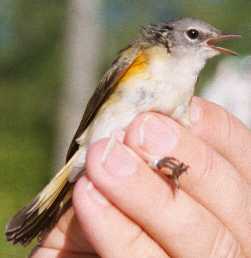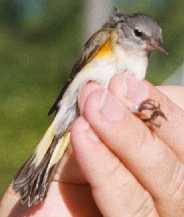- Order: Passeriformes
- Family: Parulidae
- Genus: Setophaga
- Species: ruticilla

Male American Redstart

Immature American Redstart
TAXONOMY:
|
 Male American Redstart |
 Immature American Redstart |
| FOOD: insectivorous, rarely eats seeds and fruit (Ehrlich et al., 1988). MATING SYSTEM: monogamous (Ehrlich et al., 1988). |
 |